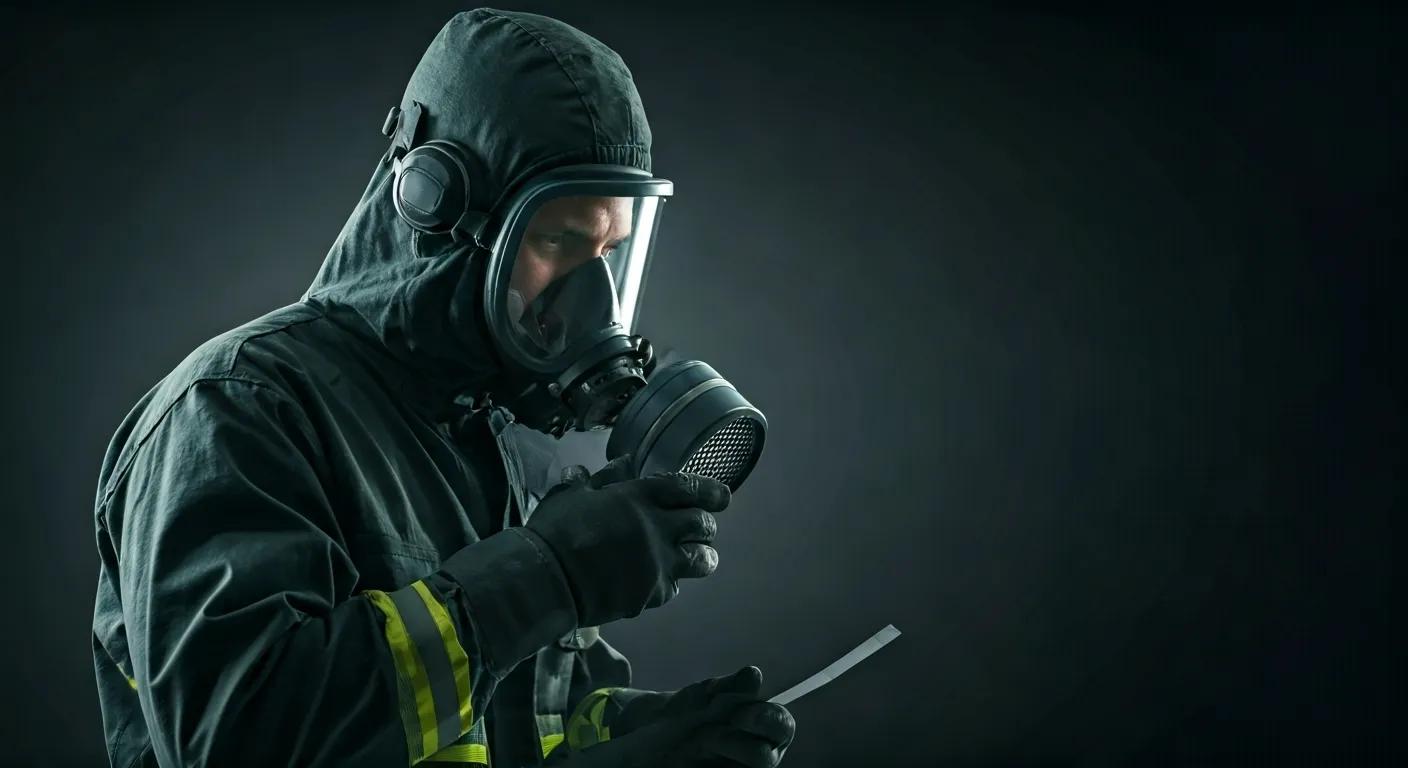When your safety depends on breathable air in hazardous environments, selecting the best chemical filters for gas masks is critical to prevent inhalation of toxic gases and particulates. This guide delivers clear insights on filter categories, filtration science, CBRN standards, lifespan considerations and buying criteria. You’ll learn about particulate, ABEK and combination filters; how activated carbon and advanced sorbents work; why certified CBRN filters matter; factors affecting filter life; and practical tips to choose the right filter for your mask and mission. MountainReady.online’s vetted gear recommendations are woven throughout to support your preparedness and purchase process.
What Are the Main Types of Chemical Filters for Gas Masks?
Gas mask chemical filters break down into three primary categories—particulate, gas-specific and combination—each targeting distinct hazards. Understanding these groups enables you to match protection levels with contamination scenarios efficiently.
Gas Mask Filter Types
Gas mask filters are categorized into particulate, gas-specific (like ABEK), and combination filters, each designed to protect against different types of hazards. Particulate filters trap solid and aerosol particles, while ABEK filters target specific gases and vapors. Combination filters offer protection against both particulate matter and gases.
National Institute for Occupational Safety and Health (NIOSH), "Respirator Selection Guide" (2004)
This source provides a comprehensive overview of respirator types and their applications, which directly supports the article's discussion of filter categories and their uses.
What Are Particulate Filters and How Do They Protect?
Particulate filters use mechanical media to trap airborne solids and aerosols, blocking dust, mists and biological agents before inhalation.
To illustrate particulate ratings, consider the following EAV table:
| Filter Type | Efficiency | Typical Application |
|---|---|---|
| P1 | ≥80% | Non-toxic dust and pollen |
| P2 | ≥94% | Mists, metal fumes, organic dusts |
| P3 | ≥99.95% | Viruses, bacteria, radioactive dust |
What Does ABEK Mean in Chemical Filters?
ABEK filters combine specific sorbents to neutralize four gas classes—organic vapors (A), inorganic gases (B), acid gases (E) and ammonia (K)—in a single cartridge.
| Entity | Attribute | Value |
|---|---|---|
| A (Brown) | Target Vapors | Organic solvents (benzene, toluene) |
| B (Grey) | Target Gases | Inorganic (chlorine, hydrogen sulfide) |
| E (Yellow) | Acid Gases | Sulfur dioxide, hydrogen chloride |
| K (Green) | Ammonia | Ammonia and derivatives |
This multi-class design permits broad-spectrum gas protection in industrial or survival situations.
How Do Combination Filters Provide Versatile Protection?
Combination filters integrate particulate media with chemical sorbents to guard against both aerosols and gases in one canister. This dual-module construction ensures uninterrupted defense in complex threat environments, reducing filter changeovers and simplifying logistics.
How Do Chemical Filters Work to Protect Against Toxic Gases?
Chemical filters rely on sorption and catalytic processes to remove toxic molecules from inhaled air, transforming or trapping harmful agents before they reach the lungs. These mechanisms underpin reliable respiratory protection.
What Role Does Activated Carbon Play in Filtration?
Activated carbon adsorbs organic vapors through its porous structure and high surface area, while impregnated carbon layers catalyze certain reactions to neutralize acid gases.
- Physiosorption of small organic compounds
- Chemisorption of acid gas molecules
- Catalytic conversion for nitrogen oxides
These steps collectively ensure high contaminant removal efficiency and low breathing resistance.
What Are Advanced Filter Materials Like MOFs and Zeolites?
Metal–organic frameworks (MOFs) and zeolites introduce precisely sized pores and tunable chemistry to enhance gas uptake and selectivity. By adsorbing specific molecules faster and with greater capacity than traditional carbon, these materials reduce filter weight and extend service life.
What Is the Importance of CBRN Filters for Maximum Protection?

CBRN filters defend against chemical, biological, radiological and nuclear threats with engineered sorbents and multi-stage media. Their all-hazard design delivers the highest level of personal respiratory security in military or emergency scenarios.
What Does CBRN Stand For and Why Is It Critical?
CBRN stands for Chemical, Biological, Radiological and Nuclear. This acronym reflects the full spectrum of lethal hazards that CBRN-rated filters are tested against, ensuring comprehensive defense when conventional gas or particulate filters fall short.
Which Standards and Certifications Ensure CBRN Filter Reliability?
Certified CBRN filters meet rigorous test criteria set by NIOSH 42 CFR 84, European EN 14387 and NATO STANAG-4155 for 40 mm connections.
| Standard | Certification Body | Key Requirement |
|---|---|---|
| NIOSH CBRN | NIOSH (USA) | Multi-agent breakthrough time thresholds |
| EN 14387 CBRN | CEN (EU) | Acid gas retention and radiological capture |
| STANAG-4155 | NATO | Interoperable 40 mm threaded canister fit |
CBRN Filter Standards
CBRN filters are designed to protect against a wide range of threats, including chemical, biological, radiological, and nuclear agents. These filters must meet rigorous standards set by organizations like NIOSH, CEN (European Committee for Standardization), and NATO to ensure their effectiveness in hazardous environments.
U.S. Department of Defense, "Military Handbook: Respiratory Protection" (2018)
This handbook provides detailed information on respiratory protection, including CBRN filters, which aligns with the article's focus on standards and certifications.
How Long Do Gas Mask Chemical Filters Last and When Should You Replace Them?
Filter lifespan depends on contaminant load, environmental conditions and filter type; sealed cartridges can remain shelf-stable for up to 20 years, while active use in high-threat zones typically lasts 8–12 hours. Monitoring usage and storage practices ensures you change filters before breakthrough occurs.
What Factors Affect Gas Mask Filter Lifespan?
Several conditions impact functional longevity:
- Contaminant concentration in the air
- Ambient humidity and temperature levels
- Inhalation flow rate under physical exertion
- Storage orientation and packaging integrity
Filter Lifespan Factors
The lifespan of a gas mask filter is influenced by several factors, including the concentration of contaminants, humidity, temperature, and the user's breathing rate. Proper storage and monitoring for signs of degradation, such as odors or increased breathing resistance, are crucial for ensuring effective protection.
Health and Safety Executive, "Guidance on Respiratory Protective Equipment" (2013)
This guidance document offers insights into the factors affecting filter lifespan, which supports the article's discussion on filter maintenance and replacement.
What Are the Signs of Filter Degradation and Breakthrough?
Early indicators of filter exhaustion include:
- Noticeable chemical odors inside the mask
- Increased breathing resistance or clogging
- Discoloration of sorbent media or filter housing
How Do You Choose the Best Chemical Filter for Your Gas Mask?
Selecting the right filter involves matching threat profiles, mask connections and operational requirements to filter specifications. Establish clear criteria—hazard type, certification, compatibility and mission duration—to pinpoint optimal solutions.
Which Filters Are Compatible with Different Gas Mask Models?
Most professional gas masks feature:
- NATO 40 mm threaded canisters for global interchangeability
- Bayonet-style attachments used by certain manufacturers
- Proprietary fittings on specialized military or industrial respirators
What Filters Are Best for Specific Threats and Use Cases?
Choose filters based on scenario demands:
| Threat Category | Recommended Filter Type | Typical Use Case |
|---|---|---|
| Organic Vapors | A1B1E1K1 (ABEK) | Chemical plants, solvent handling |
| Acid Gases | E2 | Laboratory acids, gas leaks |
| Ammonia | K2 | Agriculture fumigation |
| Particulates/Biothreats | P3 | Biohazard cleanup, wildfire smoke |
| Full-Spectrum Hazards | CBRN-certified canisters | Military, emergency response teams |
Aligning filter class to contaminant type guarantees targeted, effective protection.
MountainReady.online offers a curated selection of certified filters and masks to meet these specifications, with detailed compatibility charts in our Buyers’ Guide to Chemical Filters and expert advice on Understanding Gas Mask Filter Types. Explore our Filter Lifespan Guide and CBRN Filters to finalize your selection before you head into any challenging environment.
Safety starts with informed choices—equip your gas mask with the right chemical filter, maintain it diligently and trust MountainReady.online for gear that stands up when it matters most. By following these guidelines, you secure maximum gas mask protection and peace of mind.
Frequently Asked Questions
What should I consider when selecting a gas mask filter for specific environments?
When choosing a gas mask filter for specific environments, consider the types of contaminants present, the duration of exposure, and the filter's compatibility with your mask. Assess the concentration of hazardous substances, as well as environmental factors like humidity and temperature, which can affect filter performance. Additionally, ensure that the filter meets relevant safety standards and certifications for the specific threats you may encounter, such as CBRN or particulate hazards, to guarantee optimal protection.
How can I ensure my gas mask filter is stored properly?
Proper storage of gas mask filters is crucial for maintaining their effectiveness. Store filters in a cool, dry place away from direct sunlight and extreme temperatures. Ensure that the packaging is intact to prevent contamination. Avoid placing filters in areas with high humidity or exposure to chemicals, as these conditions can degrade the filter material. Regularly check for any signs of damage or expiration, and follow the manufacturer's guidelines for storage to maximize the filter's lifespan.
What are the differences between military and civilian gas mask filters?
Military gas mask filters are typically designed to meet more stringent standards for protection against a wider range of threats, including chemical, biological, radiological, and nuclear agents (CBRN). They often feature advanced materials and multi-stage filtration systems. In contrast, civilian filters may focus primarily on specific chemical or particulate threats and may not provide the same level of comprehensive protection. It's essential to choose a filter that aligns with your specific needs and the potential hazards you may face.
How do I know if my gas mask filter is still effective?
To determine if your gas mask filter is still effective, monitor for signs of degradation, such as noticeable chemical odors, increased breathing resistance, or discoloration of the filter media. Additionally, keep track of the filter's usage time and compare it to the manufacturer's recommended lifespan. If you experience any discomfort or difficulty breathing while using the mask, it may indicate that the filter has reached its limit and should be replaced immediately to ensure your safety.
Can I use a gas mask filter for multiple types of hazards?
Yes, some gas mask filters are designed to handle multiple types of hazards, particularly combination filters that integrate particulate and chemical filtration. For example, ABEK filters can protect against various gases and vapors, while P3 filters can handle particulates. However, it's essential to ensure that the filter is rated for the specific hazards you may encounter. Always check the filter specifications and certifications to confirm its suitability for your intended use.
What maintenance is required for gas mask filters?
Maintaining gas mask filters involves regular inspections and proper storage. Check filters for any signs of damage, such as cracks or discoloration, and replace them if necessary. Clean the mask according to the manufacturer's instructions, ensuring that no contaminants remain on the surface. Additionally, keep track of the filter's expiration date and usage time, and replace it as recommended to ensure optimal performance and safety during use.
Conclusion
Choosing the right chemical filter for your gas mask is essential for ensuring maximum protection against hazardous environments. By understanding filter types, lifespan, and compatibility, you can make informed decisions that enhance your safety and preparedness. Explore our extensive range of certified filters and masks to find the perfect fit for your needs. Trust MountainReady.online to equip you with the best gear for every challenge you face.


